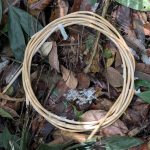Arrow poison based on Adenium sp. plant extracts was covered in a former article on this website. In the following, we will discuss the second type of poison the Hadzabe people make, which they call Shanjoko, a Strophanthus species. Additionally, we will present an arrow poison not made by the Hadzabe people but that is sometimes traded in from neighboring tribes. They call it K’alik’asi, and it is made from Acokanthera schimperi plants.
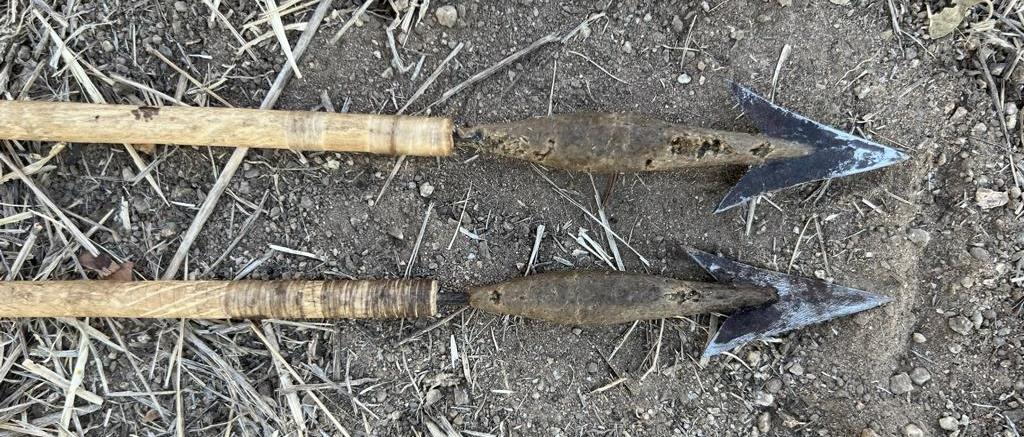
General description of Shanjoko, or Shanjo
The second most used arrow poison by Hadzabe people is an extract of the grains from the Poison Arrow vine (Strophanthus eminii). This shrub or vine grows widely in the hilly areas of the Hadzabe range. It occurs in deciduous woodland or Acacia-Commiphora Bushland biomes, especially in rocky localities, at 600-1650 m altitude. Its distribution range concentrates on Tanzania and areas west of it. The shrub or small tree is up to 7m tall or, when growing as a liana, up to 10m long.
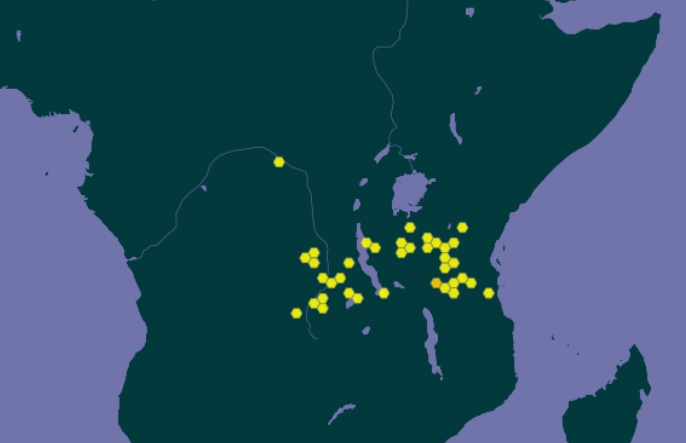
The flower of this plant is very conspicuous, with its long corolla lobes. A detailed botanical description of this plant can be found in the ‘Plant Resources of Tropical Africa.’
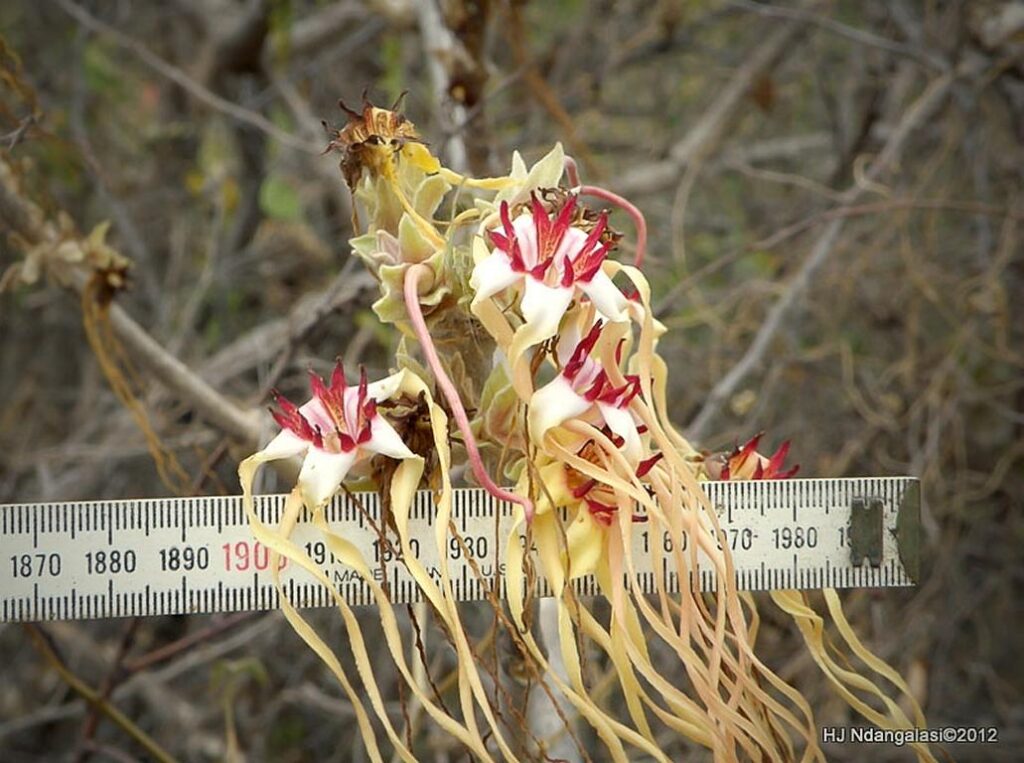
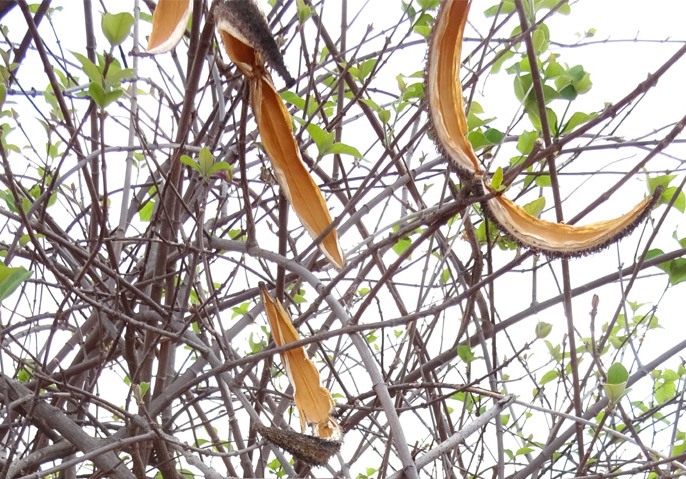
Seeds of Strophanthus used for arrow poison
Each follicle is 20-38cm / 7.8-15’’ long and 1.5-3cm / 0.6-1.2’’ wide. They taper to their apex and have long protuberances on the outer follicle shell.
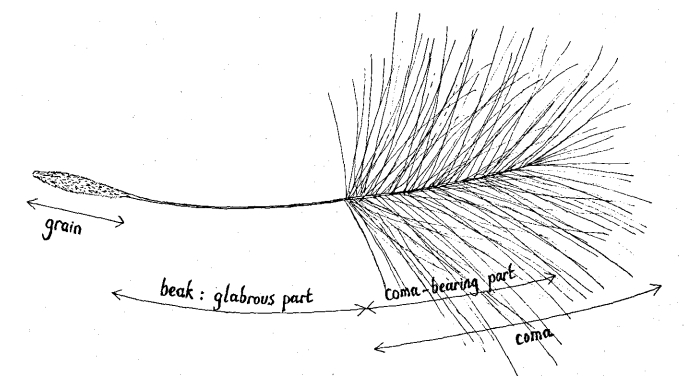
Each seed consists of a grain attached to the beak and coma. The overall length is about 11cm / 4.3’’.
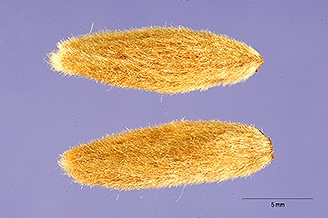
The grains themselves are spindle-shaped and of a size between 11-24mm / 0.4-0.9’’ long and 2.5-5mm / 0.1-0.2’’ wide. These seeds are the basis for making the arrow poison. At the end of the last century, they were also used to produce cortisone-containing products in the Western World. This, however, has changed, and nowadays (2024), these medical products are made from artificial raw materials.
Strophanthus eminii flower at the end of the dry season and the beginning of the rainy season (end of October-November), with the flowers appearing before or together with the leaves. Mature fruits are found in the dry season.
The seeds of several other Strophanthus species related to Strophanthus eminii are also used to produce arrow poison in different African countries. These species are S. amboensis, S. gratus, S. hispidus, S. holosericeus, S. kombe, S. nicholsonii, S. petersianus, S. sarmentosus, S. speciosus, S. thollonii, S. welwitschia and others. In total, 42 Strophanthus species occur in Africa, most of which are highly poisonous.
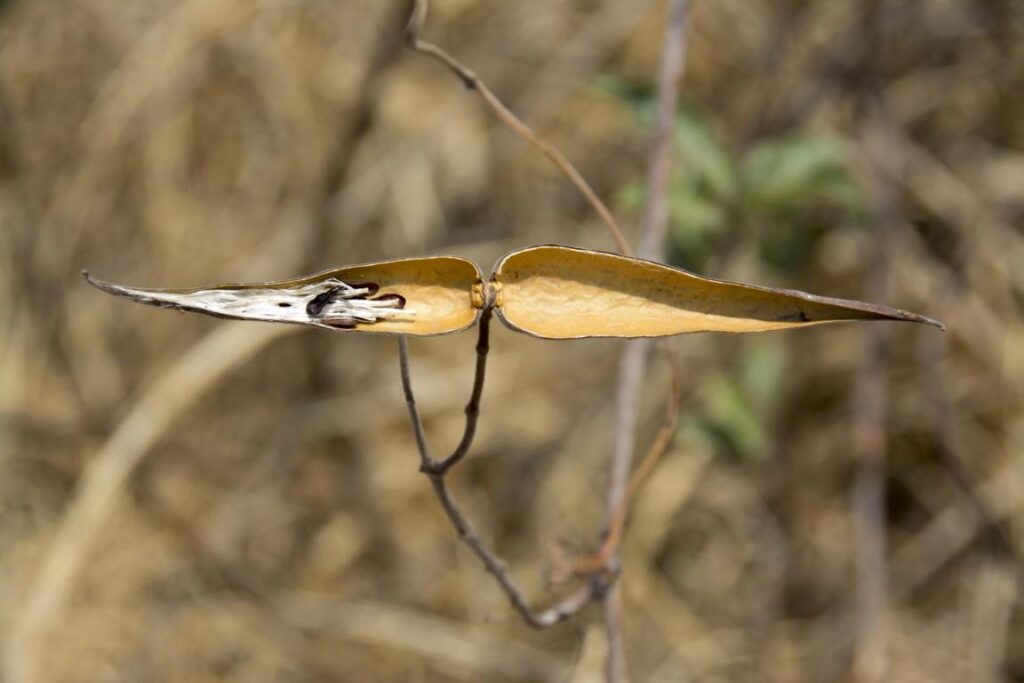

Effect of the poison
As in many Strophanthus species, a complex mixture of cardiac glycosides is present in Strophanthus eminii, and the grains contain the highest concentration. The main glycosides isolated from the grains are emi-cymarin and periplo-cymarin. When used as an arrow poison, these glycosides cause the heart of the prey animal or victim to arrest in systole. This means the heart can not contract anymore and fails to pump blood into the large vessels.
Strophanthus eminii fulfills all conditions for a perfect hunting poison. It is highly toxic, has a fast and sure effect, and has unusually high concentrations of the active principle in the grains. The cardiac glycosides are also very easily water-soluble and thus easily extracted from the grain.
The poison acts quickly, and even minimal quantities are said to be lethal. When the poison enters the bloodstream, death is said to occur in humans within 15 minutes and, on average, game within 20 minutes. This can take longer in large animals like elephants.
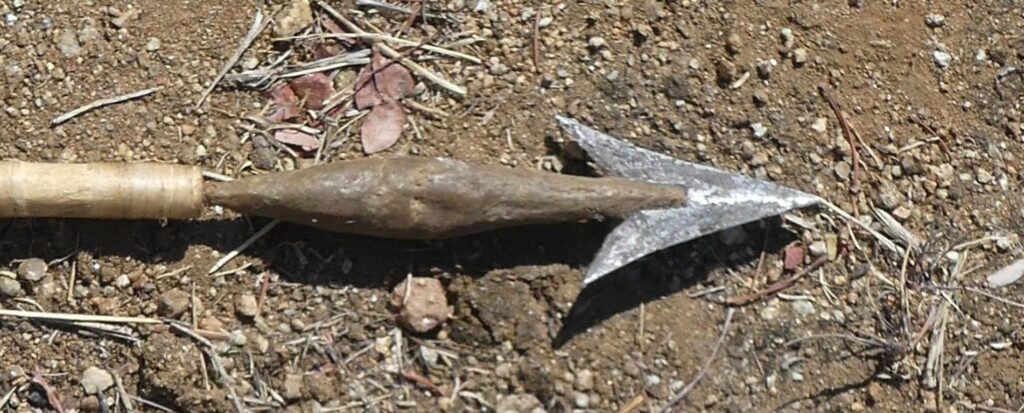
When an animal is killed in this way for consumption as food, the affected area around the point of penetration of the arrow has to be cut away and discarded.
As an antidote, tannic acid, vinegar, or a decoction of the bark of the baobab (Adansonia digitata) may be employed by smearing one of these into the wound. Presumably, any strong acid will serve as an antidote.
Despite the grains containing these very poisonous glycosides, very few cases of poisoning have been reported when these grains were taken orally. This may be based on the low rate of absorption.
Producing arrow poison from Strophanthus grains
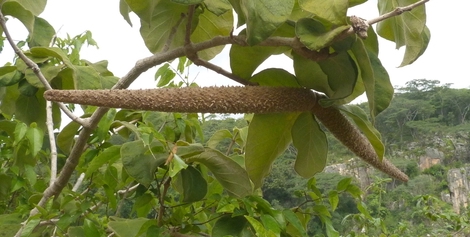
Almost mature fruits are kept in a pot until they open for arrow-poison use. The grains are then cleaned by removing the tuft of hair by stirring or burning, and they are roasted to preserve their chemical properties by destroying the enzyme, which can convert the glycosides into biologically inactive compounds when grains are stored for a long time or become damp.
To prepare the arrow poison, the grains are pounded to a pulp, and an adhesive (e.g., Euphorbia latex) is added to form a paste. This mixture is then exposed to strong sunlight for some hours to equalize the chemical compounds and thicken the paste. Subsequently, the thickened paste is smeared onto the shaft of the iron arrowhead behind the barbs and left to dry in the sun again before it is used.
Various sources (also: Marlowe (1989) report that Hadzabe people add water or saliva to the pounded grains instead of an adhesive. This makes sense, as the cardiac glycosides are water-soluble.
General description of K’alik’asi
The third type of arrow poison that Hadzabe people are using is K’alik’asi. This poison is made from extracts of the Arrow poison tree (Acokanthera schimperi). This scrub or tree does not occur in the home range of the Hadzabe people but in the area of the second hunter-gatherer tribe in Tanzania, the Akie Dorobos. Acokanthera schimperi is among the most commonly used plant species to prepare arrow poison in East Africa. Hadzabe people acquire this poison occasionally through trade with neighboring tribes.
The plant occurs in the northernmost areas of Tanzania but primarily in Kenya, Ethiopia, and Yemen on the Arab Peninsula.
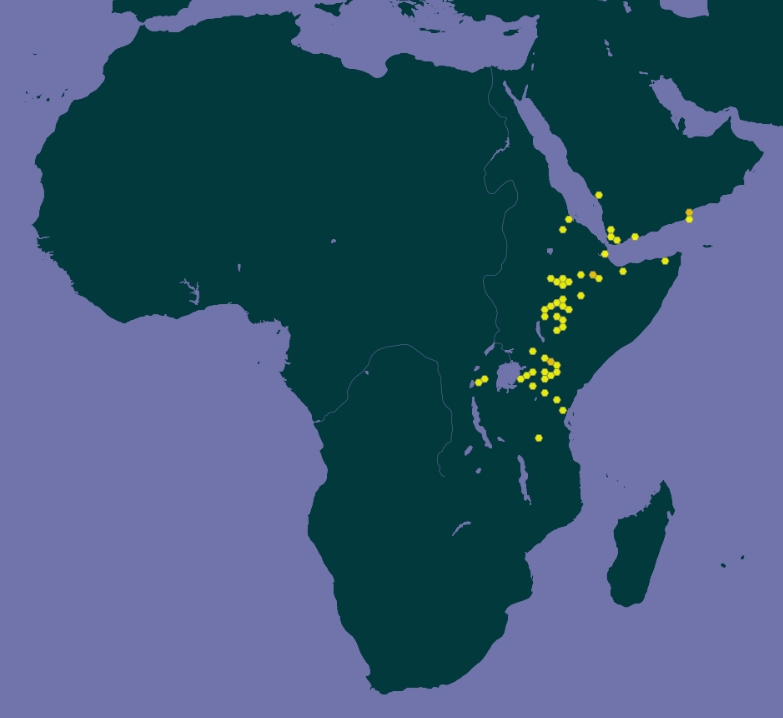
A description of this plant can be found under this link here.
Properties of K’alik’asi and the effect of its poison
Acokanthera schimperi is used alone or mixed with other plant or animal parts. The bark, wood, and roots are the usual ingredients for arrow poison. All plant parts of Acokanthera schimperi, except the pulp of the ripe fruit, contain large amounts of cardiac glycosides (cardenolides), of which nearly 20 have been identified. The glycosides are responsible for the activity of arrow poison and cardiac stimulants. The main compounds are acovenoside A (0.3–1.8%), followed by ouabain (0.1–5%), and traces of acolongifloroside K. These components, however, fluctuate with the geographical location.
Ouabain and acolongifloroside K are the most cardioactive compounds; they are highly toxic and can cause death even in minute doses. Injection of arrow poison into an animal causes death almost immediately, while humans inflicted with an arrow wound die in 30 minutes to 2 hours. The only treatment against the poison is immediate excision of the flesh around the wound or sucking the blood from the wound.
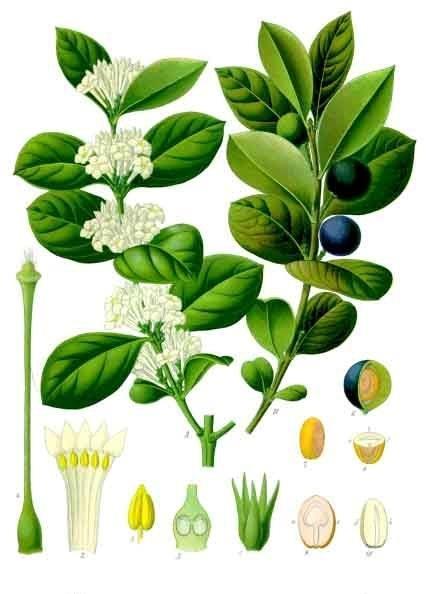
Poison making and trading
Stem wood is chopped into 15 cm long pieces. Chopped stems, roots, leaves, and less commonly seeds of Acokanthera schimperi, together with animal and other plant additives, are put in a large clay container filled with water and boiled with occasional stirring for up to 10 hours over a fire in a secluded place. Additional water is added if the water evaporates before the poison is ready.
Once all the water has evaporated, a thick, sticky black substance is left in the container. Used plant parts are discarded, and the substance is cut into pieces, put into containers, or wrapped.
Plant and animal parts are frequently added to increase poison potency and for magical reasons. In Tanzania, mainly Strophanthus spp. and, to a lesser extent, Euphorbia candelabrum are used.
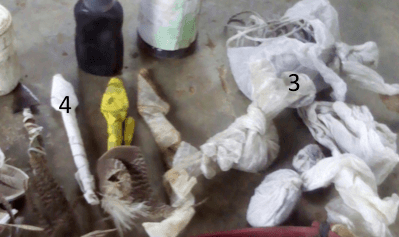
The poison is traded the same way it was 150 years ago: in the form of characteristic ‘poison cigars,’ which are packed securely in either maize leaves, textiles, or plastic. The poison must be stored in a cool, dark place and will keep its potency for decades.
Lessons learned from Hadza arrow poison from Strophanthus– and Acokanthera species:
- Desert roses are becoming less available for remotely living Hadzabe people. Strophanthus species are a good, readily available alternative.
- Acokanthera poison was and is traditionally traded from neighboring tribes.
- All three plant species (Adenium, Strophanthus, and Acokanthera) provide potent arrow poison and work on the same killing principle based on cardiac glycosides.
Additional information
My book ‘Hadzabe Survival Skills‘ offers more skills, knowledge, tools, and techniques for the Hadzabe people’s life in their natural environment. It is available on Amazon.com and Amazon’s regional websites.
.



